Question 8
With the aid of diagrams, describe two ways in which springs can be formed.
Observation
This question was attempted by few candidates who performed poorly. The expected answer is as follows:
(i) Springs formed as a results of the presence of permeable and impermeable rock strata
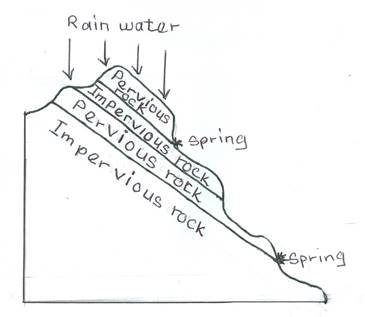
- water outflow can occur at or below the plane where water table intersects the surface where permeable and impermeable rocks alternate
- when rain falls, some of the water sinks into the ground by force of gravity
- the water moves downward through permeable rocks until it reaches an impermeable layer
- if there is an outlet for the ground water at the point where the two layers of permeable and impermeable layers appear on earth surface the water may flow out as spring
(ii) Springs formed as a result of a dyke or sill intrusion:
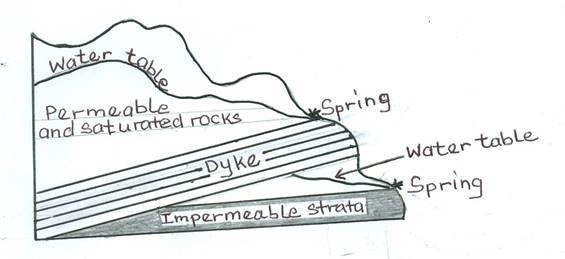
- formed due to volcanic intrusive activity that creates a dyke or sill
- the dyke/sill may cut across a layer of permeable rock
- when rain falls, some of the water sink into the ground and move downwards by force of gravity
- the water moves downward through permeable rocks until it reaches an impermeable layer to form ground water
- the ground water may be impounded by a sill or a dyke
- this obstruction occupies space underground and may cause the water table to rise to the surface of the earth
- where the water table rises to meet the surface of the earth, the water gushes out as a spring.
(iii) Springs formed in well jointed rocks:
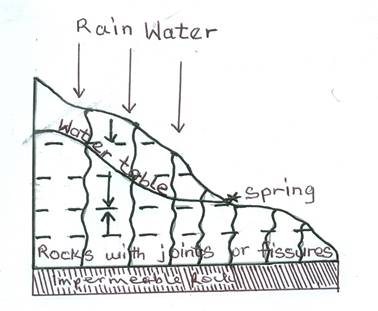
- in areas where the rocks are well jointed water may enter the ground through the joints of rocks
- when rain falls, some of the water sink into the ground
- the water moves downward by force of gravity through the joints in rocks.
- the water may accumulate on an impermeable layer to form ground water
- continuous accumulation of the water underground may cause the water table to rise
- spring may develop where the trapped ground water meets the surface of the earth.
(iv) Escarpment spring: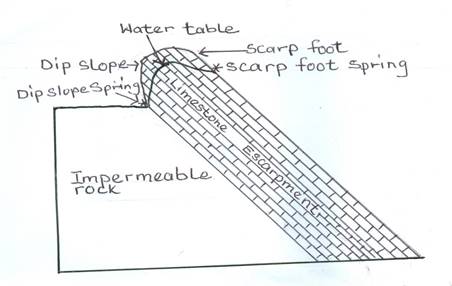
- in a chalk escarpment where the permeable rocks lie between impermeable rock strata
when rain falls some of the water sink into the ground
- the water moves downward/percolates by force of gravity through well jointed rocks.
- the water may accumulate on an impermeable layer to form ground water
- continuous accumulation of the water underground may cause the water table to rise
- spring may develop where the ground water meets the surface of the earth
- when the ground water is issued out at the foot of the scarp it is called a scarp-foot or dip- slope spring
(v) Vauclusian spring/re-emergence spring/chalk spring:
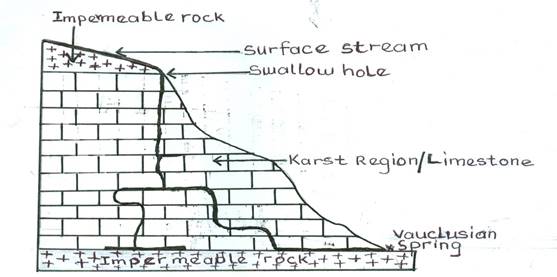
- formed mostly in limestone regions, when chalk or limestone overlies an impermeable rock
- when rain falls, water sinks into the ground through the chalk layers and create passages by solution process
- the water then disappears underground
